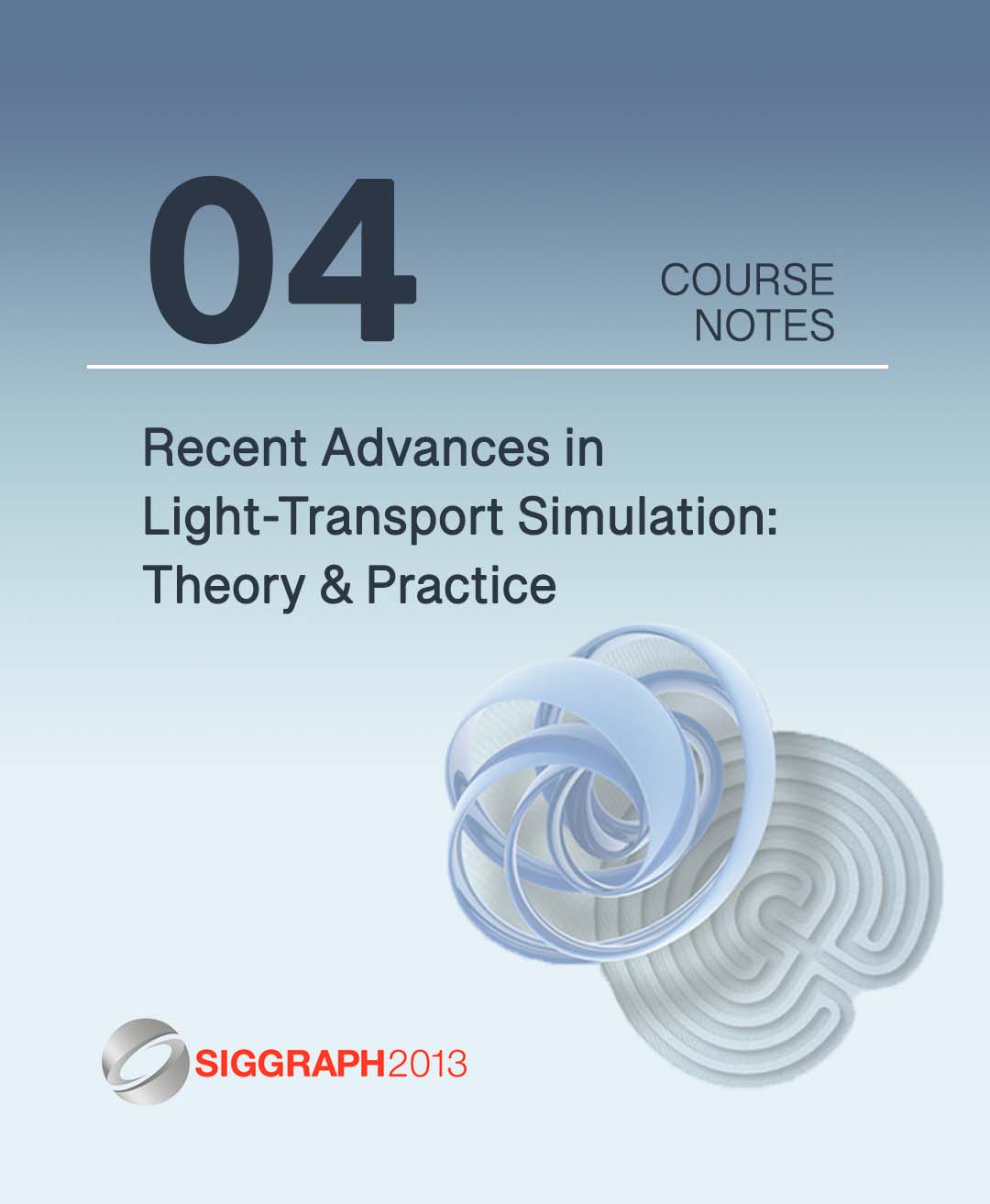“Recent Advances in Light-Transport Simulation: Theory & Practice” by Křivánek, Georgiev, Kaplanyan and Canada
Conference:
Type(s):
Entry Number: 04
Title:
- Recent Advances in Light-Transport Simulation: Theory & Practice
Course Organizer(s):
Presenter(s)/Author(s):
Abstract:
Prerequisites
Familiarity with rendering and with concepts of global illumination computation is expected.
Who Should Attend
Industry professionals and researchers interested in recent advances in robust light transport simulation for realistic rendering with global illumination.
Abstract
We are witnessing a renewed research interest in robust and efficient light transport simulation based on statistical methods. This research effort is propelled by the desire to accurately render general environments with complex materials and light sources, which is often difficult with the currently employed solutions. In addition, it has been recognized that advanced methods, which are able to render many effects in one pass without excessive tweaking, increase artists productivity and allow them to focus on their creative work. For this reason, the movie industry is shifting away from approximate rendering solutions toward physically-based rendering methods, which poses new challenges in terms of strict requirements on high image quality and algorithm robust-ness.
Many of the recent advances in light transport simulation, such as new Markov chainMonte Carlo methods or the robust combination of bidirectional path tracing with pho-ton mapping, are made possible by interpreting light transport as an integral in the space of light paths. However, there is a great deal of confusion among practitioners and researchers alike regarding these path space methods.
The goal of this course is twofold. First, we present a coherent review of the path integral formulation of light transport and its applications, including the most recent ones. We show that rendering algorithms that may seem complex at first sight, are in fact naturally derived from this general framework. A significant part of the course is devoted to the application of Markov chain Monte Carlo methods for light transport simulation, such as Metropolis Light Transport and its variants. We include an extensive empirical comparison of these MCMC methods. The second part of the course discusses practical aspects of applying advanced light transport simulation methods impractical architectural visualization and VFX tasks.




